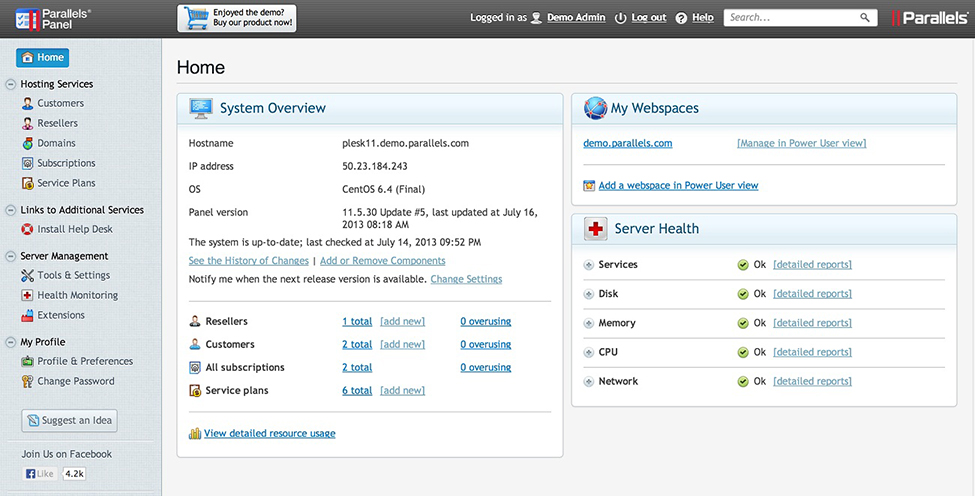


Best of all, you do not need to pay for extensions you do not need as Plesk designed its interface only to add what you use.
#Plesk install#
This means all extension installs are automated, which simplifies each install so that any end-user will feel like a pro when creating and setting up their website. The automation with Plesk will cut time in website, email, and database management. Plesk will save time and money as it makes the daily tasks of managing a server easy. (i.e., contact, email, company name, phone number, address).Įnd users with any level of experience can manage their VPS or Dedicated server easily with Plesk because of the user-friendly interface and the large number of extensions for Plesk.
#Plesk password#
The My Profile section in the menu allows you to change your Plesk administrative password and view/edit your Profile and Preferences. Under the Hosting Services section, you will administer your domains, customers, resellers create/modify subscriptions and service plans. You will be able to manage your server under the Server Management section. Once you have logged in, you will see the first main page along with the menu bar on the left side. This can be disabled by adding the following to the panel.ini: If on Linux, the default user name can be root and on Windows, it can be administrator. The default user name is admin and a password preassigned (but this may have been changed if Plesk was pre-installed by a third party). To log into your Plesk server, in a browser, you would use or. Moreover, you do not need to pay for extensions you do not need as Plesk designed its interface only to add what you use. These extensions fully interact and integrate with Plesk.
#Plesk software#
Plesk’s extensions (add-ons) include software packs that are not part of the main codebase. Plesk also supports MySQL, PostgreSQL, MSSQL Server, and MSSQL Desktop Engine, Apache Tomcat Java platform server and ColdFusion server. Plesk supports multiple Linux/Unix environments as well as Microsoft Windows. It also has incorporated other software such as Docker, multi-server management, and framework environments for Node.js, PHP, Python, Ruby on rails, and much more. Plesk integrated support for Content Management Systems (CMS), which includes but is not limited to, WordPress, Joomla, and Drupal. Plesk is a web hosting platform with a control panel that allows the administrator to set up websites, reseller accounts, e-mail accounts, DNS, and databases through a web browser). Plesk automates various tasks and processes on a single or multiple servers. Also, Plesk is designed to simplify the daily routine management and administration of websites. The administrator can create client and site templates, which essentially is allocating resources for domains and/or clients. In other words, a server utilizing Plesk is so easy to use that anyone with little to no experience can start administering their server immediately. Plesk is a great control panel system for VPS and dedicated servers because its menu is end user-friendly. Plesk is a commercial web hosting data center automation software, developed for Linux/Unix and Windows-based commercial hosting service providers. In 2015 it became its own entity after being acquired by Oakley Capital. Plesk sold to SWSoft in 2003, which then changed its name to Parallels in 2008. Plesk was created by Plesk, Inc., a Russian company, and went publicly live in 2001.


 0 kommentar(er)
0 kommentar(er)
